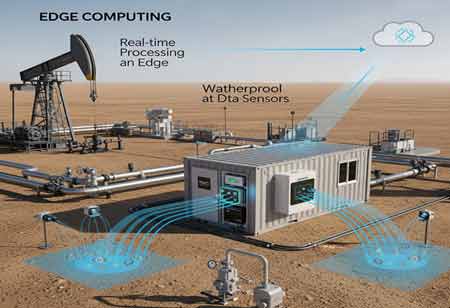THANK YOU FOR SUBSCRIBING

Top Robotics companies

-
Boston Dynamics is a global leader in developing highly mobile robots designed to tackle complex automation challenges across industries. Its innovative robots, including Spot, Stretch, and Atlas, enhance productivity, safety, and efficiency in environments like warehouses, construction sites, and industrial plants.
-
Kawasaki Robotics, a subsidiary of Kawasaki Heavy Industries, is a leader in industrial robotics, known for producing high-quality, reliable robots used across various industries, including automotive and electronics. With decades of innovation, it focuses on customer-driven solutions and exceptional service.
-
Locus Robotics is a leader in warehouse automation, offering AI-driven autonomous mobile robots (AMRs) that enhance productivity, operational efficiency, and safety. Its flexible, scalable solutions integrate seamlessly with warehouse systems, empowering companies to optimize fulfillment processes and reduce labor costs.
-
Palladyne AI offers a cutting-edge robotic software platform that enables machines to learn, reason, and act autonomously with minimal training and computational requirements. Hardware agnostic and highly adaptable, it enhances efficiency and productivity across industries like manufacturing, logistics, and defense.
-
PickNik is a leader in advanced robotics development, offering the MoveIt Pro platform to accelerate the deployment of AI-powered robotic applications. Its flexible, open platform supports all hardware brands, enabling rapid development, intelligent decision-making, and efficient integration for complex industrial use cases.
Top Robotics companies
More in News
Unlocking Business Potential: Predictive Insights in Europe
Friday, November 28, 2025
Fremont, CA: Europe is at a crossroads, confronting the revolutionary potential of artificial intelligence (AI) as well as the necessity of sustainable growth. These two forces are not antagonistic; rather, they are becoming more and more entwined, with predictive AI providing European companies with previously unheard-of chances to promote responsible growth. Using AI's analytical capabilities to produce actionable insights is turning becoming a key component of sustainable strategy as the continent negotiates challenging economic conditions and aggressive climate goals. The European Imperative: Sustainability and Responsible AI Europe has consistently positioned itself as a global leader in sustainability, exemplified by ambitious targets such as the European Green Deal. The EU has led the way in AI regulation with its landmark AI Act, which adopts a risk-based approach that prioritises safety, transparency, and ethical standards in AI development and use. This dual focus creates a unique ecosystem where businesses are encouraged to innovate with AI, provided they do so responsibly and with a clear eye on environmental and social impact. Key Applications of Predictive AI for Sustainability in Europe In Europe, predictive AI is driving sustainability across several key domains. It enables optimised resource management by forecasting demand and supply, allowing businesses to allocate energy, water, and other resources more efficiently, reduce waste, and minimise their environmental footprint. For instance, AI-powered systems can adjust building energy consumption based on occupancy patterns and weather forecasts or support more innovative irrigation strategies to preserve water in agriculture. It also facilitates circular economy practices by enhancing waste management and recycling through computer vision for accurate sorting, predictive maintenance in recycling plants, and identifying emissions hotspots across supply chains—ultimately promoting sustainable product design and material use. Predictive AI strengthens supply chain resilience by anticipating disruptions, optimising logistics, and enabling localised sourcing, which not only lowers transportation emissions but also mitigates risks from climate events or geopolitical changes. In climate risk mitigation and adaptation, AI models enhance climate predictions, monitor environmental variables using satellite data, and power early warning systems, enabling communities and businesses to prepare more effectively for extreme weather events or natural disasters. Finally, predictive AI fosters sustainable product innovation by analysing consumer trends alongside environmental impact data, guiding the development of greener products and services that align with the growing demand for eco‑friendly solutions. As Europe continues to champion both technological advancement and environmental stewardship, predictive AI will undoubtedly play a pivotal role. European businesses can harness the power of predictive insights to not only achieve their sustainability goals but also drive enduring, responsible growth in a rapidly evolving global landscape. The future of European business is increasingly intertwined with the intelligent application of AI, paving the way for a more sustainable tomorrow.
Haptic Internet Technology: A New Era of Interaction
Friday, November 28, 2025
Fremont, CA: The Technical University of Munich (TUM) developed a revolutionary technology called Haptic Codecs for the Tactile Internet (HCTI). This technology has revolutionized how humans perceive texture and feedback in remote operations and online commerce by enabling touch sensations to be conveyed via the Internet. HCTI functions much like existing media codecs—think JPEG for images or MP3 for audio—but for touch. The technology compresses and transmits haptic data, making it possible to experience physical sensations remotely. Applications include telesurgery, where surgeons can feel their way through delicate procedures from miles away and immersive gaming, where players can interact with virtual worlds as though they were real. Unlike audio or video, transmitting haptic data presents unique challenges. Realistic touch requires two-way communication at lightning speed—ideally within one millisecond. This allows users to send movement commands while simultaneously receiving tactile feedback. The process forms a global control loop, continuously exchanging input and response, creating a seamless interaction. HCTI addresses these challenges with two innovative solutions: Kinesthetic Compression, where a component records and transmits data about limb position and applied forces, enabling accurate movement replication. Another is tactile compression, which focuses on the sensitivity of human skin, allowing users to feel textures, such as the difference between paper and metal. These codecs work alongside a standardised protocol that ensures devices are compatible and perform optimally. Before HCTI, transmitting haptic data was resource-intensive, often requiring networks to handle up to 4,000 data packets per second. This approach led to inefficiencies and occasional data loss, undermining the user experience. HCTI’s advanced compression algorithms reduce the data rate without sacrificing quality, solving this problem and making the tactile internet viable for widespread use. The potential applications are transformative. Telemedicine will see surgeons operating remotely with the same precision as in person, revolutionising healthcare accessibility. Remote vehicle operators will gain a layer of safety and control, feeling the terrain they navigate. In entertainment, gamers can experience virtual environments like never before, with tactile sensations enhancing immersion. As HCTI moves from research labs to real-world applications, it promises to reshape how we interact with technology. This innovation doesn’t just enhance functionality—it fundamentally changes our relationship with the digital world. The tactile internet is now a tangible reality that could define the next era of connectivity.
Edge Computing: The Catalyst for Remote Operational Success
Friday, November 28, 2025
Fremont, CA: The rise of IoT devices and real-time data processing demands has pushed traditional cloud computing to its limits, particularly in remote and challenging environments. Edge computing, a distributed computing paradigm, brings computation and data storage closer to data generation, paving the way for innovation in remote operations. Key Advantages Unlocked by Edge Computing in Remote Operations Edge computing offers numerous benefits in remote settings, including reduced latency, real-time decision making, bandwidth efficiency, enhanced reliability, improved data security and privacy, and scalability. By processing data locally, the time delay between data generation and action is significantly reduced, allowing for instantaneous responses and enhancing safety. Edge computing acts as a filter, processing raw data locally and transmitting only relevant insights to the cloud, leading to cost savings on bandwidth and storage. It also enhances reliability and offline capability, ensuring operational continuity for critical systems. The localized approach minimizes data exposure during transit to the cloud, reducing the risk of cyberattacks and compliance with data privacy regulations. Edge computing architectures also offer flexibility in managing the growth of IoT devices, preventing network congestion, and optimizing resource utilization. The future of edge computing in remote operations is poised for significant transformation, driven by the convergence of technological advancements and strategic integration. One of the most notable developments will be the increased sophistication of edge AI. Innovations in model compression, hardware acceleration, and distributed learning will empower edge devices to run more powerful and complex AI algorithms efficiently. This will enable intelligent decision-making directly at the source of data, minimizing latency and enhancing responsiveness. Simultaneously, improved interoperability and standardization across frameworks, protocols, and platforms will streamline the development and deployment of edge solutions, encouraging broader adoption across industries. The integration of edge computing with 5G and next-generation connectivity technologies will further expand its potential. The high bandwidth and ultra-low latency of these networks will support more robust, real-time applications in even the most remote environments. Additionally, the emergence of self-healing and autonomous edge networks will reduce reliance on manual oversight. These systems will be capable of self-organization and autonomous operation, offering increased resilience and operational continuity. To support increasingly complex remote operations, multi-layered edge architectures will become more prevalent. These strategies will distribute varying levels of processing power and intelligence across the network, optimizing both performance and cost. Collectively, these trends signal a future where edge computing plays a central role in enabling intelligent, autonomous, and efficient remote operations. Transformative Use Cases in Remote Operations Edge computing is revolutionizing remote industries, including oil and gas, agriculture, smart cities, healthcare, industrial IoT, manufacturing, mining, and construction, with its real-time capabilities. In remote oil fields, sensors can instantly analyze data to detect pressure changes, equipment malfunctions, and leaks, thereby preventing costly downtime and enhancing safety. In agriculture, edge computing enables precision farming by optimizing irrigation, fertilization, and animal welfare in real-time. In traffic management, edge devices process data from cameras and sensors, reducing reliance on central cloud systems. In healthcare, edge computing enables remote patient monitoring, improving patient outcomes in real-time. In industrial IoT and manufacturing, edge computing enables the identification of anomalies and the prevention of failures as they occur. The urgency of real-time data is met with the importance of edge computing. Edge computing is not merely an incremental improvement; it's a paradigm shift that is fundamentally reshaping how organizations operate in remote and challenging environments. By bringing compute power closer to the data source, it empowers real-time decision-making, optimizes resource utilization, and enhances reliability and security, ultimately unlocking unprecedented innovation and efficiency across a diverse range of industries. As technology continues to advance, the role of edge computing in connecting and optimizing the world's most remote operations will only continue to grow.
Sensor Technology: The Future of Global Communication
Friday, November 28, 2025
FREMONT CA: The Asia-Pacific region is undergoing a significant transformation in sensor technology, driven by advancements in environmental monitoring, healthcare diagnostics, and industrial automation, leading to smarter cities, precision agriculture, and improved personal health management. Trends Shaping Consumer Preferences and Sensor Demand Advanced Technological Innovations The growing demand for smarter sensors is driven by the need for data-driven insights that enable more informed decision-making. Big data and artificial intelligence (AI) are key technologies contributing to this trend, which make sensors smarter by enhancing their capabilities and applications. By leveraging AI algorithms, sensors quickly identify patterns and generate valuable insights. For instance, AI-powered sensors in autonomous vehicles can analyze data rapidly and efficiently, enabling real-time decision-making and improving safety. This shift towards automation in the automotive and manufacturing sectors is driving significant advancements in sensor technology. Automotive: Automation improves safety and enhances vehicle user experiences in the automotive sector. Sensors like radar, lidar, and thermal imaging sensors are crucial in developing advanced driver-assistance systems (ADAS) and autonomous vehicles. These sensors track driver behavior, identify factors like fatigue, and adjust the environment to optimize comfort. Manufacturing: In the manufacturing industry, integrating sensors in robotics enables real-time data collection and optimal production processes, significantly enhancing operational efficiency. Sensors like force and torque are incorporated into collaborative robots (cobots) to ensure safety and precision during human-robot interactions. Healthcare: The demand for AI-powered sensors extends to healthcare, driven by the global aging population and the need to enhance patient care and well-being. Wearable sensors and biosensors, in particular, are advancing this field by continuously monitoring vital health signs such as heart rate, blood oxygen levels, and sleep patterns. These sensors enhance healthcare systems in APAC by providing real-time data that supports early detection of health issues, improves disease management, and reduces the strain on healthcare facilities. Optimizing Energy Consumption to Minimize Carbon Footprint With growing public awareness of environmental sustainability, energy-efficient sensors are becoming increasingly important across various industries, including healthcare, automotive, agriculture, and construction. These sensors monitor the construction and agricultural sectors' air quality, soil health, and other environmental factors. Monitoring pollution through environmental gas sensors helps improve energy use in buildings and significantly reduce environmental footprint. Next-Generation of Sensor Innovations Recent advancements in sensor technology have paved the way for innovative manufacturing techniques, such as printing on flexible substrates using techniques such as inkjet and screen printing. These low-temperature printing processes enable the application of sensors on large-area substrates made from diverse materials, including silicone, polyimide, and polyurethane. This innovative approach allows the creation of printed sensors, offering hybrid functionality in a compact form factor. Another cutting-edge innovation at the forefront of sensor technology is the quantum sensor, renowned for its unparalleled precision and sensitivity. These sensors can transform fields such as navigation and environmental monitoring by enabling breakthroughs such as enhancing GPS accuracy and precision measurement in various applications. The next decade holds immense potential for sensor technology, with innovations that will make sensors more integrated, smart, and energy-efficient. However, addressing challenges such as interoperability and security, which hinder the integration of sensors and limit their adoption, is essential to unlocking their full potential. By tackling these issues head-on, sensors transform industries, enhance everyday life, and shape humanity's more connected, efficient, and sustainable future.
Embracing Technology for a Sustainable Climate Future
Friday, November 28, 2025
FREMONT, CA: One urgent worldwide issue that calls for creative solutions is climate change. One important instrument for overcoming this obstacle is technology, which is sometimes viewed as a double-edged sword. It improves resilience and sustainable development by providing data-driven analytics and renewable energy solutions. Driven by technical developments, the renewable energy revolution reduces reliance on finite resources and greenhouse gas emissions by offering clean alternatives to fossil fuels. Technological innovations in energy storage, such as lithium-ion batteries and pumped hydro storage, address intermittency issues, enabling a reliable transition to renewable sources. Smart grids and demand-side management technologies optimize energy distribution, enhancing efficiency and resilience in the face of climate-induced disruptions. Agriculture, vulnerable to climate variability, transforms technology-driven solutions. Precision agriculture employs sensors, drones, and satellite imagery to accurately monitor soil health, crop growth, and water usage. Genetic engineering and biotechnology offer drought-resistant crops and disease-resistant strains, bolstering food security amidst changing climatic conditions. Infrastructure resilience lies at the heart of climate change adaptation, with technology playing a pivotal role in its enhancement. Advanced modelling techniques and simulation software enable engineers to design infrastructure capable of withstanding extreme weather events, from fortified coastal defences to resilient urban infrastructure. Sensor networks and Internet of Things (IoT) devices facilitate real-time infrastructure integrity monitoring, enabling proactive maintenance and rapid response to climate-induced disruptions, minimizing downtime and economic losses. Nature-based solutions harness the inherent resilience of ecosystems to mitigate climate risks and enhance adaptation efforts. Green infrastructure, encompassing green roofs, urban forests, and permeable pavements, reduces the urban heat island effect, mitigates flood risks, and enhances biodiversity. Technological innovations such as bioengineering and ecological restoration techniques amplify the effectiveness of nature-based solutions, offering scalable and cost-effective strategies for climate resilience in urban and rural landscapes. In the era of big data, harnessing vast amounts of information becomes instrumental in climate change adaptation. Remote sensing technologies, artificial intelligence, and machine learning algorithms analyze complex environmental data to predict and mitigate climate-related risks. From early warning systems for weather events to predictive models for disease outbreaks, data-driven decision-making empowers policymakers and stakeholders to formulate adaptive strategies with precision and foresight, enhancing resilience across sectors and communities. Technology catalyzes community engagement and climate education, fostering collective action and behavioral change. Social media platforms, augmented reality, mobile applications, and virtual reality experiences raise awareness about climate change impacts and adaptation strategies, empowering individuals to take proactive measures in their daily lives. Digital platforms facilitate peer-to-peer knowledge exchange and collaboration, enabling communities to co-create innovative solutions tailored to local contexts and needs. Technology emerges as a tough ally in the quest for adaptation and resilience. From renewable energy solutions to precision agriculture and climate-resilient infrastructure, technological innovations offer various opportunities to mitigate weather shift impacts and foster sustainable development. By harnessing the power of data-driven decision-making and promoting community engagement, we can navigate the complexities of climate change with resilience and ingenuity, forging a path toward a more sustainable and resilient future for future generations. Collaboration, innovation, and collective action remain imperative in addressing the defining challenge of our time.
Revolutionizing Environmental Monitoring: The Role of Particle Counters
Friday, November 28, 2025
Fremont, CA: Microplastic pollution is a growing environmental problem in the Asia-Pacific (APAC) area. These tiny plastic pieces, which are less than 5 mm in size, come from common products, industrial operations, and the decomposition of larger plastic waste. The region's biodiversity and human health are seriously threatened by their pervasiveness in the air, water, and soil. Determining the level of this pollution and putting specific mitigation measures in place depend heavily on efficient monitoring techniques. Particle counters, which have historically been employed in industrial settings and cleanroom settings, are becoming more useful instruments in the APAC region's battle against microplastic pollution. Particle Counters: A Promising Solution Particle counters present a highly efficient and increasingly real-time method for monitoring microplastic pollution across air and water systems. These instruments function by detecting and counting individual particles as they pass through a sensing zone, classifying them based on size and, in some cases, their optical characteristics. For monitoring airborne microplastics, optical particle counters (OPCs) can be deployed to continuously track particle concentrations within defined size ranges. By analyzing the size distribution and concentration data, researchers can gain valuable insights into the origins and movement of airborne microplastics in diverse environments, including urban centers, industrial zones, and even remote natural regions. The availability of real-time data enables the identification of pollution hotspots and supports the evaluation of mitigation strategies, such as enhanced filtration technologies or modifications to industrial processes. In aquatic environments, monitoring is more complex due to the heterogeneous nature of microplastics in water. Nonetheless, specialized particle counters equipped with advanced detection capabilities are being investigated as tools for rapid assessment in rivers, lakes, and coastal waters, complementing traditional sampling methods. Techniques such as flow cytometry can be adapted to detect and characterize microplastics by analyzing their fluorescence and light-scattering properties, offering new avenues for timely and detailed environmental monitoring. Advantages of Using Particle Counters Modern particle counters play a pivotal role in advancing the monitoring of microplastic pollution by offering several key advantages. They enable real-time or near real-time data collection, allowing for continuous surveillance and an understanding of pollution levels and their fluctuations. These devices also significantly increase efficiency and throughput; unlike manual methods, they can process large volumes of air or water in a shorter time, facilitating more frequent and comprehensive assessments. Particle counters also deliver objective, quantitative measurements, providing precise data on particle concentration and size distribution while minimizing analytical subjectivity. Many systems support automation and remote deployment, enabling long-term monitoring in hard-to-reach areas with minimal human intervention. Particle counters represent a significant advancement in the ability to monitor microplastic pollution in the APAC region. Their capacity for real-time or near real-time data acquisition, increased efficiency, and objective analysis offers valuable insights into the distribution, sources, and potential impacts of these pervasive pollutants. Collaborative efforts among researchers, governments, and industries are essential to harness the full potential of these technologies and implement evidence-based strategies for a cleaner and more sustainable future for the region.

















